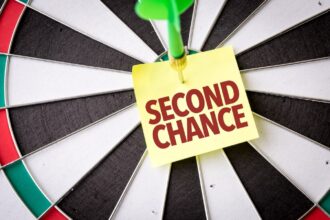Last weekend’s time change caught me by surprise. I’ve been so fully focused on my trip this coming weekend and a major book project that I completely forgot we were “falling back” an hour on Sunday morning. I was also caught by surprise at its effects on my energy levels, which got slammed. I don’t remember them being so dramatic in years past. Age can increase sleep issues, according to numerous articles like this one from Forbes.com. The good news is if you’re dragging tail this week like me, there are things you can do to minimize the impact. First understand that what you’re feeling this week is not unusual.
Time Change Effects
“It can take five to seven days for your body to adjust to the time change,” shared Portland, Oregon-based occupational therapist Nicole Villegas in an email. “The time change disrupts your circadian rhythm,” she added, explaining this concept as an internal clock influenced by the sun’s path and light synchronizing your body’s activities with day and night. “It makes sense that we must consider it thoughtfully as we ‘fall back’ and seem to have brighter mornings and darker afternoons. A one-hour change may not seem like a lot but it is shifting major biological activities in your body.”
How might this impact you? “You may feel tired and hungry earlier than you’d expect based on the wall clock,” the OT commented. You may also be more likely to experience sleep and eating disruptions, both of which can release stress-related hormones, she further noted.
There are effects on your mental health too, causing emotional stress and decreased motivation. Those who have ongoing sleep issues or suffer from depression or mood disorders can be even more challenged, Villegas observed. “There is a need for a better understanding of the long-term impact of daylight savings time changes on people living with bipolar disorder and seasonal affective disorders,” she suggested.
Even those without mental health issues can be affected. “A person’s wake-up time relative to the sunrise is an important factor for wellness. The ‘fall back’ time change results in sunlight being present earlier, according to the wall clock, and may be beneficial for the morning,” she noted. Pre-work runners and cyclists probably rejoice. “On the other hand, the darker afternoons may decrease daily activities, especially those outdoors.” Yes, those of us who exercise outdoors after work will be suffering in the dark for months to come!
Lighting Adjustments
Lighting strategies are your friend! “Exposure to sunlight after you wake will help adjust your circadian rhythm,” Villegas suggested. Using an alarm clock that mimics the sunrise will help with that. So will layering your window treatments. “Use one blackout or low light curtain to create a dark space for sleeping and upon waking, open it to a sheer curtain or clear window for daylight exposure,” she recommended. The blackout panels will help you sleep better, so you wake up less tired.
Another strategy to consider is circadian lighting. “Install smart light bulbs that adjust according to a timer from a cool color daylight setting to a warm color nighttime setting to support your circadian rhythm and sleep-wake schedule,” Villegas advised.
Smart bulbs can replace standard models in existing lamps and fixtures, or be part of a larger smart home system. “The lighting in your home can help simulate daytime and sunset, which will support your circadian rhythm to adjust to the changes,” she pointed out, and this is true whether you upgrade with whole house automation or just add smart bulbs in select rooms. You can use warm evening light to offset darker evenings without risking your sleep cycles.
Temperature Adjustments
An automated thermostat is extremely helpful for setting temperature shifts, but you can certainly change yours manually if that’s not an immediate option. “Adjust the temperature in your home to signal when it’s time to sleep and wake. Cooler temperatures can encourage you to put on more clothes and blankets and go to sleep. Warmer temperatures can be used to stimulate your waking and movement,” Villegas suggested.
Some power companies offer discounts for upgrading your thermostat to a programmable model because it can also save energy. This can be the perfect time to look into that option for your home.
Space Layout Adjustments
“Circadian rhythm is closely related to your eating cycles,” the OT mentioned. If your relaxation area is oriented toward the kitchen, potentially turning your favorite chair away from pantry and refrigerator temptation can be helpful. You can also rezone your home, even if temporarily, for awake activities versus rest and sleep activities, Villegas suggested.
“This can serve as another signal to the body and nervous system for when to be alert and active or resting and digesting,” she noted. Designate spaces with more natural light for movement and awake activities, and those that are darker for rest. (That’s why those bedroom blackout panels are so helpful – particularly if you need to nap or sleep during the day to work a night shift.)
Last Words
“The relationship you have with time matters,” observed Villegas. You may identify as a morning bird or night owl; even this small time shift can throw you off for a while. It can also influence your sense of self-worth, she added, “like being proud of living by the principle that early is on time or feeling defeated when showing up late.”
Whichever you hold as your style, be compassionate with yourself and others this week! No home store purchase required!
Read the full article here










